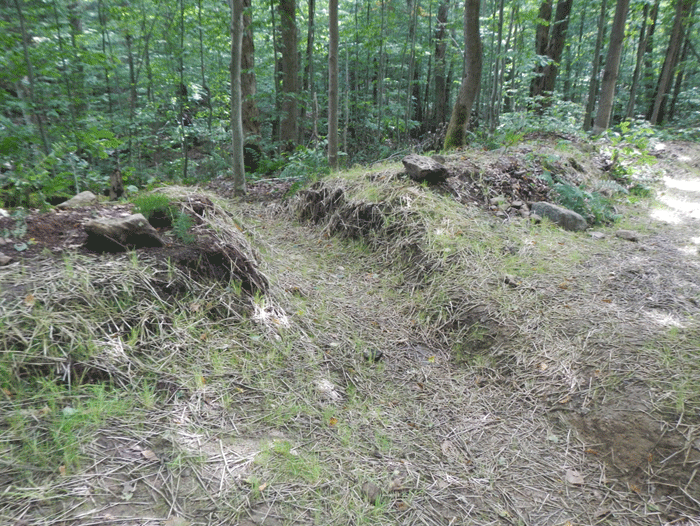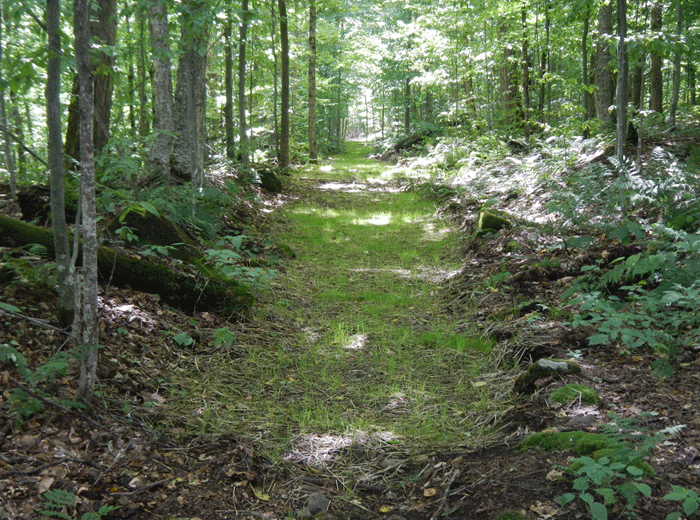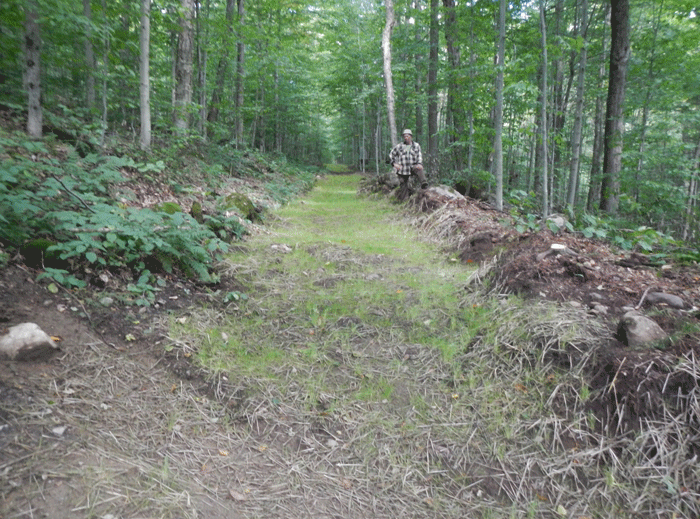In 2014, the Department of Environmental Conservation (DEC) built a new class II community connector snowmobile trail called the Gilmantwon trail through a southern part of the Jessup River Wild Forest area. These types of trails are unlike any other recreational trails being built on the Forest Preserve. These road-like “trails” require extensive grading and excavating with heavy machinery to widen and flatten the terrain into a surface for high speed snowmobiling. All trees within the 9-12 foot trail corridor are removed as well as all understory plants and shrubs. Bedrock that protrudes into the trail area is chipped away and oversized water bars are needed because of the changed hydrology from the terrain alterations generates greater stormwater. These trails require bench cuts along trailsides and oversized bridges to hold large multi-ton groomers.
Parts of this trail followed an old tote road that had been heavily damaged and other parts were cut through intact forest areas.
The pictures below were obtained as part of an information request to the Department of Environmental Conservation (DEC) and show how the construction of this trail turned a dense forest into a grassy trail.
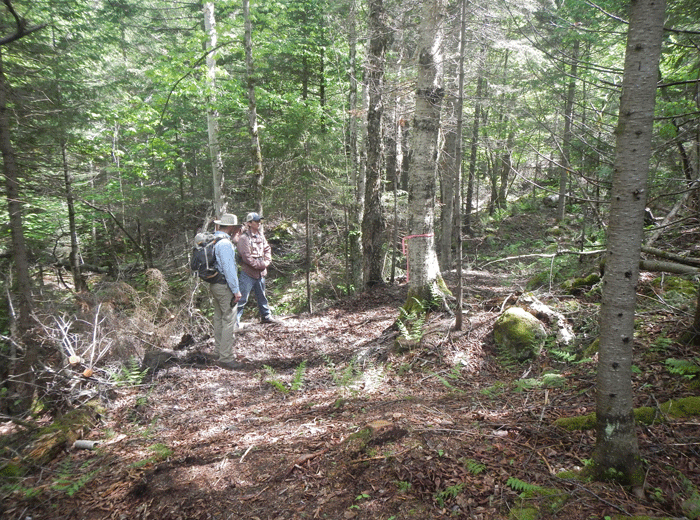
DEC staff discuss the route of a new class II community connector snowmobile trail through a tract of unbroken forest.
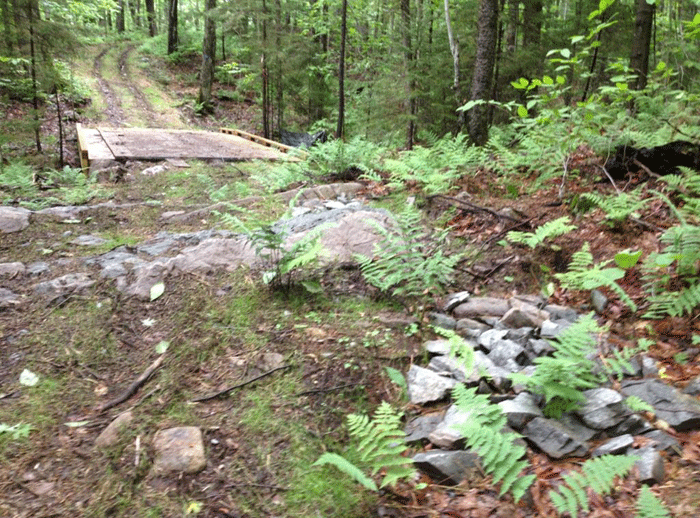
Bedrock is chipped away during trail construction of the Gilmantown class II community connector Snowmobile Trail in the Jessup River Wild Forest area. This type of land alteration does not happen with other types of recreational trails on the Forest Preserve.

